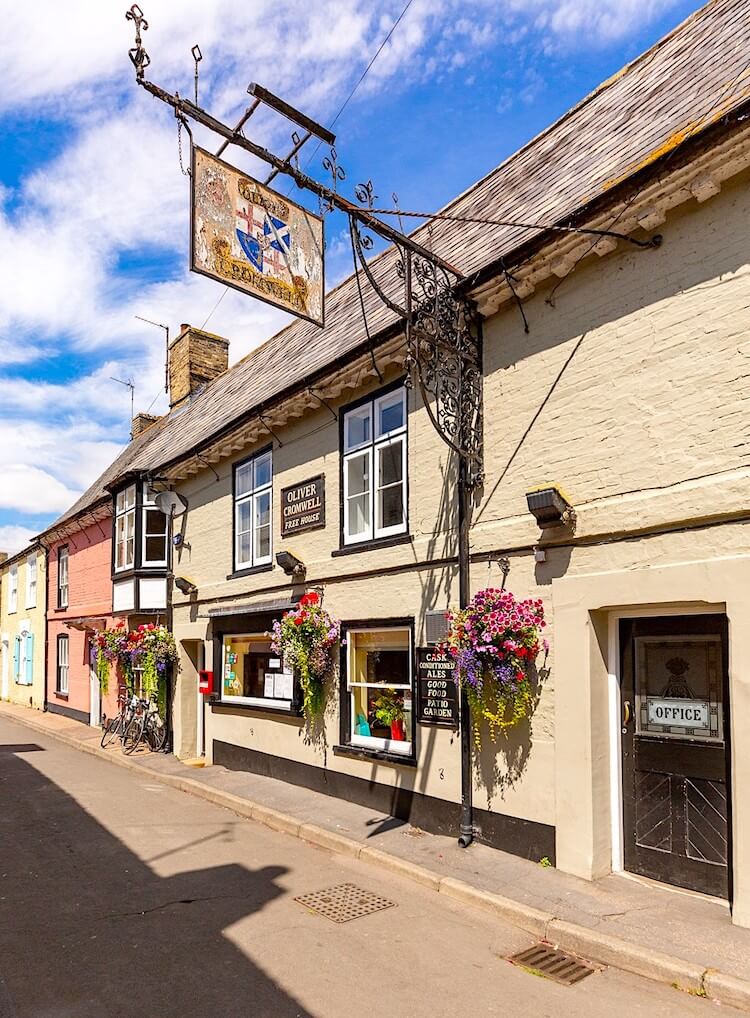Republic Cottage
Henry How left two landmarks in St Ives, both reflecting his anti-monarchist views. Henry ran rings around the Town Council when he refused to pay his poor rates. Read on to learn about Republic Cottage and Henry's life.
Toll House
Republic Cottage was originally a toll house, built in the early 1800s. At that time turnpike trusts sprang up around England to fund road improvements. Toll gates surrounded St Ives. Republic Cottage was by the turnpike road to Somersham, today the B1040 Somersham Road.
Turnpike trusts were a great success. But with the coming of the railways and a reduction in goods transport by road, many faced bankruptcy. In the late 1800s the Somersham Turnpike Trust sold the toll house.
Henry How lived at the toll house in 1884. He named it Republic Cottage because of a dislike of the monarchy. This was an uncommon view to take. Queen Victoria was on the throne and very popular.
In 1968, Cambridgeshire County Council demolished Republic Cottage to allow for road widening. To view the location today, click here.
Payment of Poor Rates
Ordnance Survey (OS) maps appeared in 1884. First drafts placed Republic Cottage in Needingworth Parish. One of the OS officials confirmed this to Henry.
 |
| 1884 Ordnance Survey map of Stocks Bridge and Republic Cottage. |
In 1888, the Overseers of St Ives summoned Henry for refusing to pay the last two poor rates (Cambridge Independent Press). In fact, he’d refused to pay since 1883. His son had secretly paid for him. The latest OS maps showed Republic Cottage in St Ives parish. Henry's solicitor argued an OS official had stated it was in Needingworth parish. After three hours, the magistrates decided the evidence showed the cottage was in St Ives parish. Yet, they declined to force Henry to pay since they wanted the opinion of a higher court.
The following year the High Court of Justice decided against St Ives for taking too long to raise the matter (Peterborough Advertiser). They awarded costs against the town, amounting to £100 (today £14,000). The ratepayers held a public meeting in the Corn Exchange a month after the decision (Cambridge Independent Press). They declined to pursue Henry any further, fearing costs mounting to ten times what they had incurred so far. They struck Henry's name from the rate book of St Ives. The majority of those present sympathised with Henry. The meeting agreed there was no animus shown against Mr How or any of his family, nor was there any ill-will against him. The issue was still unresolved in 1933 and rates unpaid.
Who was Henry How?
Henry left a legacy in St Ives other than Republic Cottage. He started a brewery in Water Lane, today's Wellington Street, in the 1840s, calling it the Feathers. By the 1870s, Henry renamed the pub after the leader of Britain's only republic. Today the location is one of St Ives' most attractive and popular pubs. It is Henry we have to thank for establishing the Oliver Cromwell.
 |
| Oliver Cromwell pub |
Henry was born in Cherry Hinton. He married Anne Baxter in 1835. By 1841 the family lived at the Currier's Arms in Bridge Street, Henry's occupation a brewer. They had two children, Louisa, aged 2 years and 9 month old William.
Anne died in 1850. The family's fortunes took a downturn. The 1851 census shows Henry living in Water Lane. This was several steps down the desirability scale from busy Bridge Street. Henry dealt in marine stores and kept a beerhouse.
A further two sons were present, Alfred aged 4 years and Arthur aged 2 years. To help him cope with a busy household, Henry had a live-in servant, George Ashworth, a 43 year old Yorkshireman. No doubt his 12 year old daughter was also important to keeping the family running. Although William, now aged 10 years, was a 'scholar', Louisa, aged 12 years, had no occupation.
By 1861, Henry had married again, to Elizabeth. In 1881, Henry and Elizabeth lived in Needingworth Road, no doubt Republic Cottage. Henry, aged 71 years, left the running of the Oliver Cromwell to his son. Arthur ultimately took over the licence from his father.
Henry died in 1895, aged 85 years. Arthur built the Oliver Cromwell into a successful business, but died in 1894, aged 46. The licence transferred to his wife Emma, and then to Emma's son. George wasn't successful at running the pub. Ownership passed out of the How family in 1919.
Some of the above information is courtesy of
Bob Burn-Murdoch's 'The Pubs of St Ives'



No comments:
Post a Comment